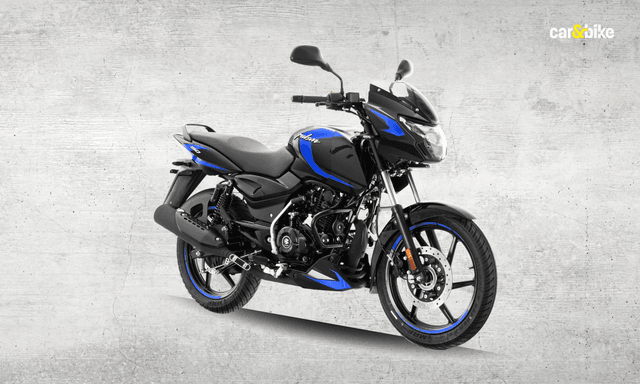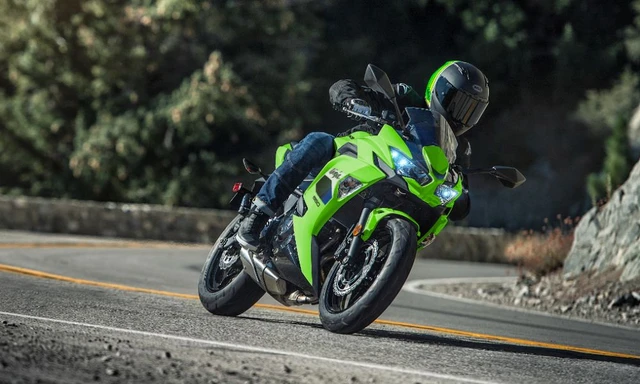What Is Torque Vectoring?

- Torque is important for understanding how rotational forces acting
- Torque vectoring allows cars to navigate in specific clean ways
- Without varying torque, the car might skid out of control
The tracks on which cars run can vary from time to time. Often, cars need to make various unprecedented turns for which the mechanical car system needs to be ready. Torque vectoring is a complex concept that can dictate how a car turns. The clutch is an essential component that can influence how torque works on a vehicle. The physics is undoubtedly noteworthy to look at, considering the immense importance to the working of a car.

Photo Credit: www.popularmechanics.com
What is Torque Vectoring?
Torque vectoring refers to the distribution of torque between the wheels. It is a process used by automobiles to vary the torque at every half-shaft.
Working
The concept of torque vectoring uses the idea of differential for the wheels. One wheel on the axle is allowed to go faster than the other. This concept is generally electronically controlled for more efficiency and accuracy.
When the car is travelling in a straight line, the clutch pack that controls torque vectoring is in a state of the open differential. This means that the torque is uniformly distributed across both the wheels on the axle.
When a hairpin turn is made, the torque is transferred to the outer wheel to maintain the grip. If there is another sudden turn, the torque is again distributed to the wheel with the most grip. To prevent understeering while accelerating out of turn, the torque is shifted to the outside rear wheel, and the turning is smooth.

Photo Credit: carthology.com
Brake-based torque vectoring
Brake-based systems are more durable and efficient. Instead of relying on a system of differential, one of the wheels on the axle is stopped. This creates a momentary differential allowing for a smooth turn for the wheel.
Electric-based torque vectoring
In this system, each wheel is fitted with an electric motor. Thus, the control over the turn is handled individually. The addition of a system like regenerative braking allows constant change in the torque, making the vehicle turn.

Photo Credit: www.audi-mediacenter.com
Advantages of torque vectoring
One of the main advantages is the smooth turning of the car when the car needs to cross hairpin bends. The steering lock is effectively reduced, and so is the understeering, which makes turning more accessible and more efficient.
Torque vectoring makes driving much safer. The car doesn't need to unnecessarily waste energy to go through various turns. Torque vectoring reduces the chances of any accidents happening since that could be catastrophic.
Torque vectoring allows for individual controls of the wheels. This means the wheels don't have to be controlled through a single system, and individually, the power and torque levels can be varied to make driving fun.
Trending News
 3 mins readWill The Kawasaki W230 Be Launched In India?
3 mins readWill The Kawasaki W230 Be Launched In India?
Latest News
 Jaiveer Mehra | Dec 26, 2025New Mahindra XUV 7XO Teaser Confirms 540 Degree CamerasLatest teaser video confirms the SUV will get the new 540 degree camera set-up from the XEV series as well as a few other features.1 min read
Jaiveer Mehra | Dec 26, 2025New Mahindra XUV 7XO Teaser Confirms 540 Degree CamerasLatest teaser video confirms the SUV will get the new 540 degree camera set-up from the XEV series as well as a few other features.1 min read car&bike Team | Dec 24, 2025Updated Bajaj Pulsar 150 Launched At Rs 1.09 Lakh: Gets LED Lighting, New ColoursThe Pulsar 150 is offered in three variants with prices topping out at Rs 1.15 lakh (ex-showroom).2 mins read
car&bike Team | Dec 24, 2025Updated Bajaj Pulsar 150 Launched At Rs 1.09 Lakh: Gets LED Lighting, New ColoursThe Pulsar 150 is offered in three variants with prices topping out at Rs 1.15 lakh (ex-showroom).2 mins read Janak Sorap | Dec 24, 20252026 Kawasaki Ninja 650 Launched at Rs 7.91 LakhWith E20 compliance, the 2026 Ninja 650 receive a new colour update and a premium price tag.1 min read
Janak Sorap | Dec 24, 20252026 Kawasaki Ninja 650 Launched at Rs 7.91 LakhWith E20 compliance, the 2026 Ninja 650 receive a new colour update and a premium price tag.1 min read Jafar Rizvi | Dec 24, 2025Listed: Car Manufacturers That Will Hike Prices From January 2026Based on the announcements made so far, the price increase across car models is expected to range between 2 and 3 per cent.3 mins read
Jafar Rizvi | Dec 24, 2025Listed: Car Manufacturers That Will Hike Prices From January 2026Based on the announcements made so far, the price increase across car models is expected to range between 2 and 3 per cent.3 mins read car&bike Team | Dec 24, 2025KTM RC 390 Discontinued Globally, Remains On Sale In IndiaThe KTM RC 390 will continue to be offered on sale in India, where it is manufactured and there’s still strong demand for the model.2 mins read
car&bike Team | Dec 24, 2025KTM RC 390 Discontinued Globally, Remains On Sale In IndiaThe KTM RC 390 will continue to be offered on sale in India, where it is manufactured and there’s still strong demand for the model.2 mins read car&bike Team | Dec 23, 2025India Bike Week 2025 In Pictures: Highlights From Edition 12The 12th Edition of IBW was held on December 19 and 20, and if you missed this year’s festival, here is a recap of all that happened.3 mins read
car&bike Team | Dec 23, 2025India Bike Week 2025 In Pictures: Highlights From Edition 12The 12th Edition of IBW was held on December 19 and 20, and if you missed this year’s festival, here is a recap of all that happened.3 mins read
 Jafar Rizvi | Dec 24, 2025MG Windsor EV 38 kWh Long-Term Report: IntroductionThe Windsor EV has joined our garage, and before it settles into daily duty, I took it out to get a sense of what living with an electric car is like.4 mins read
Jafar Rizvi | Dec 24, 2025MG Windsor EV 38 kWh Long-Term Report: IntroductionThe Windsor EV has joined our garage, and before it settles into daily duty, I took it out to get a sense of what living with an electric car is like.4 mins read Seshan Vijayraghvan | Dec 23, 20252026 Kia Seltos Review: Formula Is Spot On, But Is The Timing Right?The 2nd-gen Kia Seltos has arrived, but it has the challenge of facing strong rivals like the Victoris and Sierra. The question is simple - Does it still have what it takes?9 mins read
Seshan Vijayraghvan | Dec 23, 20252026 Kia Seltos Review: Formula Is Spot On, But Is The Timing Right?The 2nd-gen Kia Seltos has arrived, but it has the challenge of facing strong rivals like the Victoris and Sierra. The question is simple - Does it still have what it takes?9 mins read car&bike Team | Dec 26, 2025Tata Punch EV Long-Term Second Report: Highway Performance, Pros & ConsAfter a week of living with the Tata Punch EV Long Range—including a proper Mumbai-Nashik highway test—we've learned what this little electric SUV is really made of.1 min read
car&bike Team | Dec 26, 2025Tata Punch EV Long-Term Second Report: Highway Performance, Pros & ConsAfter a week of living with the Tata Punch EV Long Range—including a proper Mumbai-Nashik highway test—we've learned what this little electric SUV is really made of.1 min read Seshan Vijayraghvan | Dec 22, 20252026 Tata Harrier & Safari 1.5 Hyperion Review: By The Power Of Petrol!The new Tata Harrier and Safari petrol packs a new 1.5-litre TGDI Hyperion engine, but is it an ideal alternative to the diesel version?7 mins read
Seshan Vijayraghvan | Dec 22, 20252026 Tata Harrier & Safari 1.5 Hyperion Review: By The Power Of Petrol!The new Tata Harrier and Safari petrol packs a new 1.5-litre TGDI Hyperion engine, but is it an ideal alternative to the diesel version?7 mins read Bilal Firfiray | Dec 19, 2025Maruti Suzuki e-Vitara Review: Worth The Wait?After a long wait, the first-ever electric Maruti Suzuki is here. It’s the e-Vitara, and it comes with a few promises. But arriving this late, is it worth the wait? Or is it a case of too little, too late?9 mins read
Bilal Firfiray | Dec 19, 2025Maruti Suzuki e-Vitara Review: Worth The Wait?After a long wait, the first-ever electric Maruti Suzuki is here. It’s the e-Vitara, and it comes with a few promises. But arriving this late, is it worth the wait? Or is it a case of too little, too late?9 mins read






























































































































